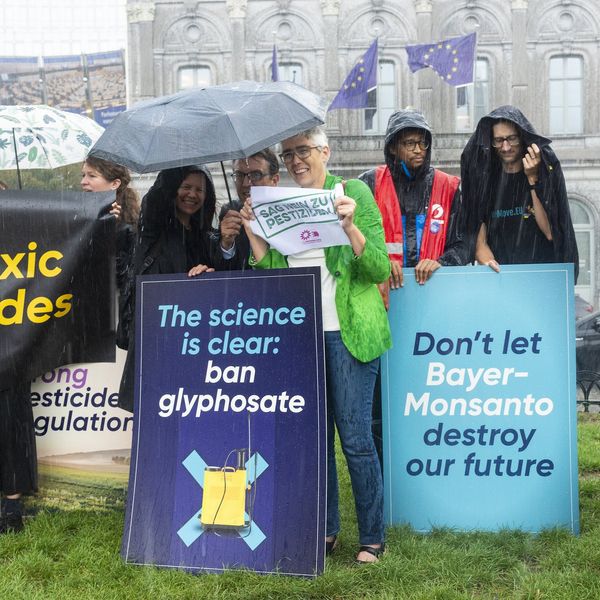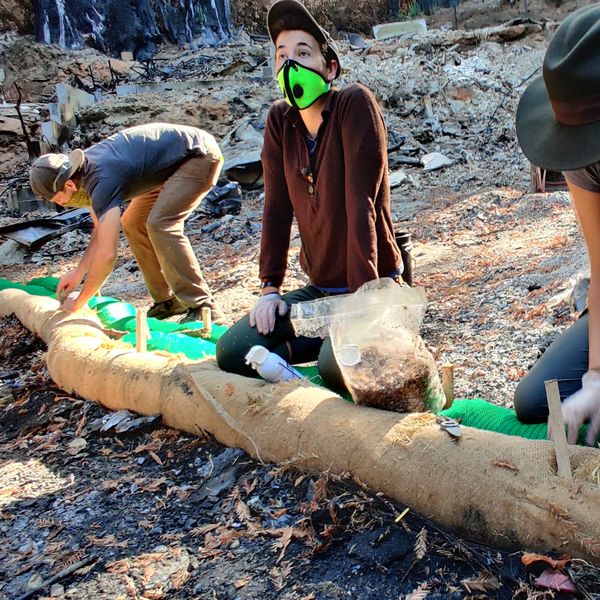Over the last 25 years, the toxicity of 381 pesticides in the U.S. more than doubled for pollinators and aquatic invertebrates such as crustaceans, mayflies, and dragonflies, according to a new study.
For vertebrate groups like birds, fish, and mammals, toxicity dropped. But as pesticides harmful to vertebrates were phased out, this made way for greater use of the insecticide classes, neonicotinoids and pyrethroids.
"Both of these are less toxic to vertebrates, but more toxic for invertebrates," Ralf Schulz, a professor of ecosystem resilience at University of Koblenz and Landau in Germany, and lead author of the study, told EHN.
Using data from the United States Geological Survey and Environmental Protection Agency, Schulz and his team examined the total amount of each pesticide applied annually in the U.S. from 1992 to 2016 and their respective toxicities.
They found that overall use of pesticides dropped. However, there was increased use of neonicotinoids, an insecticide class chemically related to nicotine, which are especially toxic for pollinators like bees; and pyrethroids, which are more toxic for aquatic invertebrates.
Neonicotinoids are systemic pesticides, meaning that they are absorbed by plants and travel throughout their tissues. These chemicals also bind to water, so when they reach rivers and streams, natural filtration cannot prevent them from affecting aquatic species.
Many pollinators and aquatic invertebrates are closely related to the target species pesticides look to control. Thus, spraying crops causes unintended deaths for these organisms.
The increased toxicity that Schulz observed in his study spells trouble as pollinators and aquatic insects are foundational species for entire ecosystems across the U.S.
Pollinator and aquatic invertebrate loss

Spraying insecticides. (Credit: U.S. Department of Agriculture)
E.O. Wilson, an influential American biologist, calls invertebrates, "little things that run the world." This is especially true in waterways, Aimée Code, pesticide program director at The Xerces Society for Invertebrate Conservation, told EHN.
"They're part of decomposition, water filtration, they're food sources for fish and birds," Code said.
Pollinators, which orchestrate reproduction for 90 percent of the Earth's flowering plants, contribute $24 billion to the U.S. economy each year. About $15 billion comes from honey bees alone, which play an important role in the ecological production of fruits and vegetables.
Aquatic invertebrates and pollinators are declining in the U.S. Across the Upper Mississippi River and Lake Erie, mayfly populations have dropped by more than 50 percent. Just between 2008 and 2013, 23 percent of wild honey bees were lost.
One study in Biological Conservation found that 33 percent of aquatic insects are threatened with extinction. This is 5 percent more than land insects.
"There really is not a ton of data on our pollinators and aquatic invertebrates, but studies from across the country and the world are generally showing decline," Code said.
Temperature changes, habitat loss, pesticides, and other pollution sources are some of the main drivers, according to Code.
At the heart of these issues is the American Midwest.
In the Midwest, agricultural pesticide use is 2.5 times higher than in other U.S. regions. As a result, one 2017 United States Geological Survey study found that more than half of 100 sampled Midwestern streams contained dangerously high pesticide levels for aquatic insects.
Later, the USGS team identified the three insecticide compounds found in sampled streams that were most likely to be toxic. They found that the insecticides, all neonicotinoids and pyrethroids, kept invertebrates from reaching adulthood and reduced abundance of some species, especially scrapers. Scrapers are a class of invertebrates that feed on the film along rock surfaces. Common examples include snails and some tadpoles.
"As scraper abundance decreased we saw that algal growth increased," Lisa Nowell, a USGS research chemist and lead author of the study, told EHN.
Mayflies and stoneflies were also extremely sensitive, Nowell said.
Neonicotinoids and pyrethroids reach these organisms' environments in a number of ways, such as water or soil runoff, and even groundwater movement.
Many Midwestern agricultural fields use tile drains, which removes excess water from soil underground, according to Sarah Hoyle, a pesticide program specialist with Xerces Society.
"When you're applying pesticides to the field, excess water or rain can cause a lot of subsurface flow that moves into tile drains, is collected, and moved off-field," Hoyle told EHN.
Editor's note: This story was updated to correct pollinators' contribution to the U.S. economy.
Banner photo credit: Sandy Millar/Unsplash



























